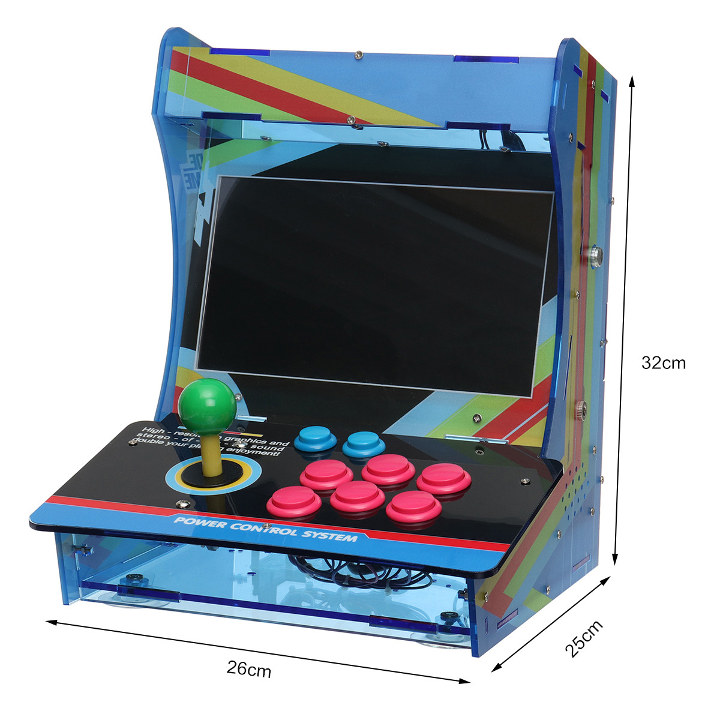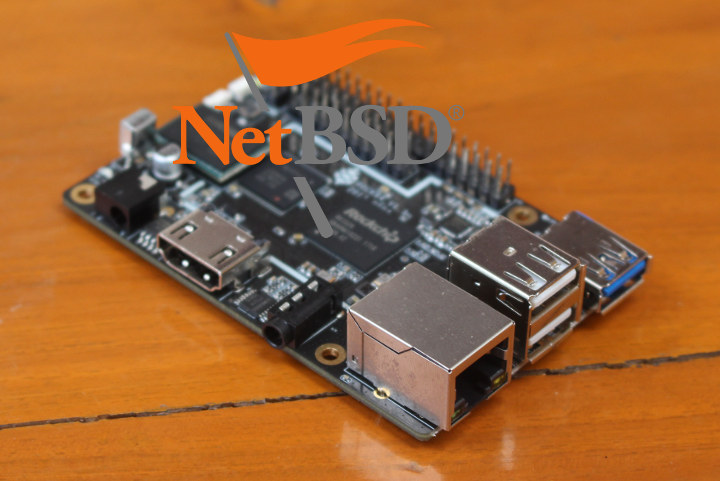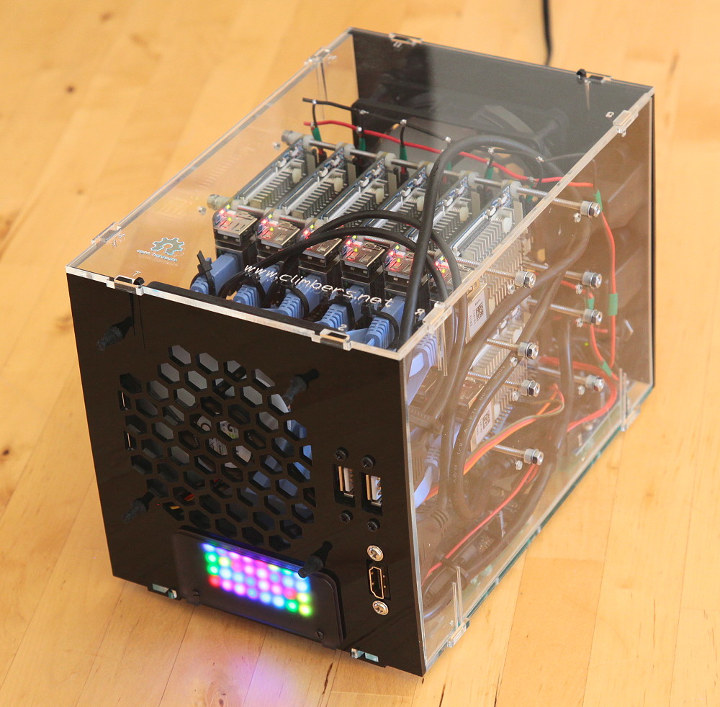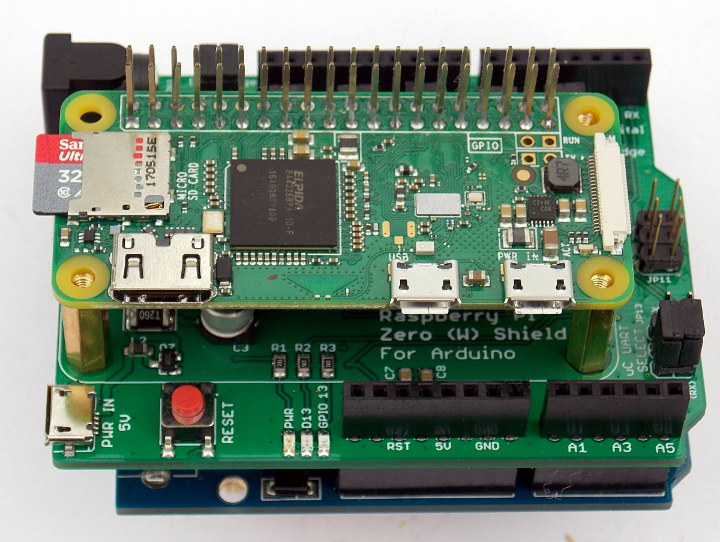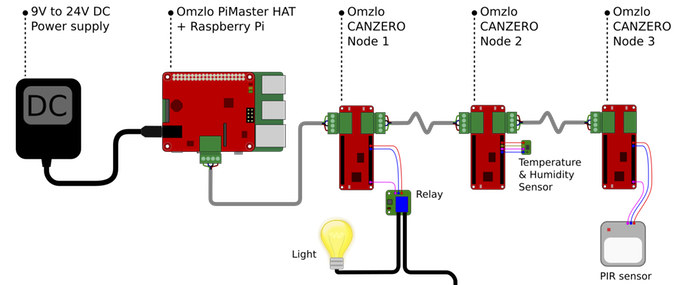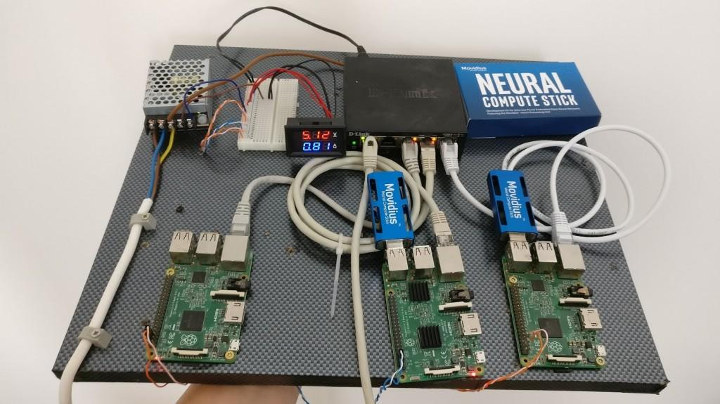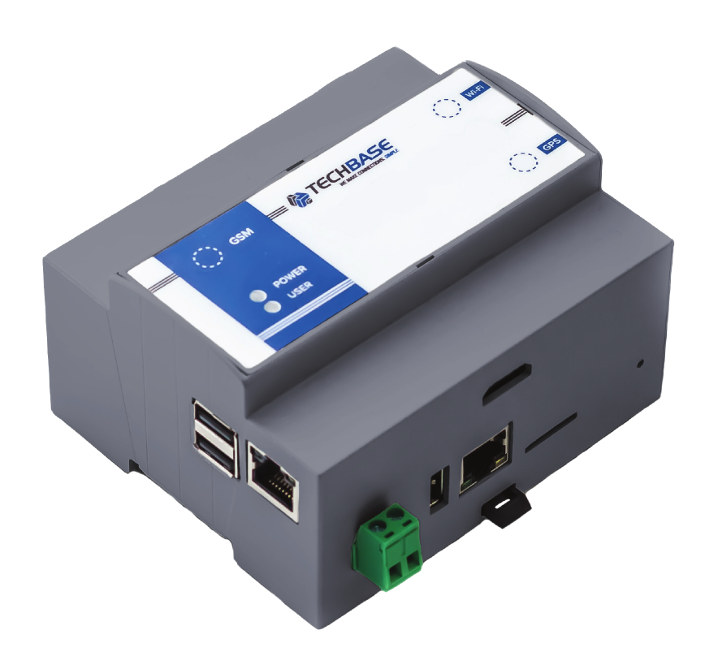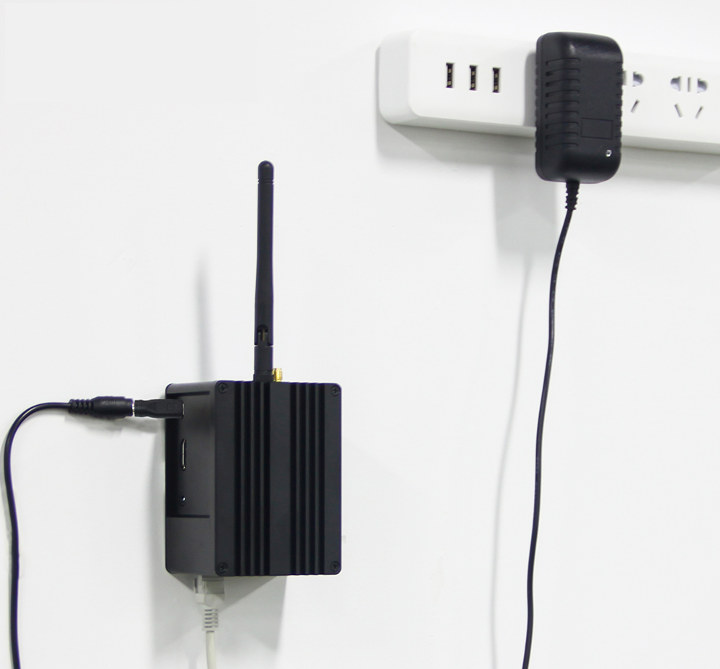When it comes to retro-gaming for the Raspberry Pi 3 board, there’s no lack of option with firmware like RetroPie or Lakka, a few off-the-self accessories like USB or Bluetooth gamepad, a an HDMI monitor, you can get started in no time. However, if you want to make a retro arcade game console, it may take some more efforts, as you’d normally have have to design the case yourself, source the buttons and controls, the display, extra electronics and so on. But the “DIY classic retro arcade game console” based on Raspberry Pi 3 board currently sold on Banggood for $247.99 should make things much easier, as it’s supposed to be plug and play, while still offering the option to add or remove games, and mess around with the hardware if you wish to. Banggood did not provide the full technical details, but here’s what we know about the specifications: […]
NetBSD ARM64 Images Now Available with SMP for Raspberry Pi 3, Some NanoPi Boards, and Pine64 Boards
NetBSD on Arm started in 2014 with the release of version 7.0, and last year device tree support was implemented and tested on some Allwinner H3 boards. But apparently, so far NetBSD only supported 32-bit Arm, with initial support for 64-bit Arm (ARM64) committed last April, but good progress has been made, and NetBSD ARM64 bootable firmware images are now available with SMP (multi-core) support. Eight different NetBSD ARM64 images can be downloaded: Generic NetBSD 64-bit image for Raspberry Pi 3 and NVIDIA Tegra X1 Two images for FriendlyELEC boards namely NanoPi NEO2 and NEO Plus2 boards Five images for the following Pine64 boards and hardware platforms Pine A64/A64+ Pine A64-LTS / Sopine with baseboard Pine H64 Pinebook laptop ROCK64 (ROCK64Pro not yet supported) The supported hardware matrix shows most features are supported, but there are still a few things missing such as GPU, crypto and MIPI CSI on all […]
96-Core NanoPi Fire3 Boards Cluster is a DIY Portable Solution to Teach or Develop Distributed Software
Nick Smith has been messing around with clusters made of Arm boards for several years starting with Raspberry Pi boards, including a 5-node RPI 3 cluster, before moving to other boards like Orange Pi 2E, Pine A64+, or NanoPC-T3. His latest design is based on twelve NanoPi Fire3 boards with 8 cores each, bringing the total number of cores to 96. The platform may not be really useful for actual HPC applications due to limited power and memory, but can still be relied upon for education and development, especially it’s easily portable. Nick also made some interesting points and discoveries. It’s pretty with shiny blinking LEDs, and what looks like proper cooling, and the cluster can deliver 60,000 MFLOPS with Linpack which places it in the top 250 faster computers in the world! That’s provided we travel back in time to year 2000 through 🙂 By today’s standard, it would […]
Raspberry Pi Zero (W) Shield for Arduino is an Arduino UNO Baseboard for RPI Zero Board
There are already various Arduino compatible shields for Raspberry Pi where the add-on board connect to a Raspberry Pi 3 board to provide Arduino headers, but Raspberry Pi Zero (W) Shield for Arduino is a little different as it acts as a baseboard with Arduino header for Raspberry Pi Zero (W) RPI Zero (W) shield specifications: Reset switch for the micro-controller LED – Shield power LED, LED connected to Arduino pin 13, LED connected to Raspberry Pi GPIO pin 13 Expansion Female headers allowing for full-access to all Arduino pins. ICSP header access for AVR Micro-controllers Misc 3mm mounting holes for securely mounting Raspberry Pi Zero (W) to shield (mounting hardware included) Solder-jumpers to disconnect Micro-controller SDA/SCL pins from pull-up resistors Solder-jumper to disconnect Raspberry Pi GPIO13 from LED Power Supply – 6.5 to 12V power supply (6.5 to 9V recommended) via 2.1mm power barrel jack, or 5V via micro […]
NoCAN IoT Platform Leverages Raspberry Pi & Arduino for CAN Bus Projects (Crowdfunding)
Many IoT projects rely on wireless connectivity through WiFi or Bluetooth, but in some cases it may be more reliable and convenient to use wired connectivity. The CAN Bus is a little like a low bandwidth Ethernet PoE solution for IoT, as it allows to transfer data over a serial connection while provided power at the same time, and can be daisy chain to support multiple boards. Omzlo’s NoCAN IoT platform provides a CAN bus solution leveraging Raspberry Pi 3 board through their PiMaster HAT acting as a CAN bus gateway, and Arduino compatible CANZERO boards to which you can connect sensors and actuators. Omzlo PiMaster HAT specifications: MCU – STMicro STM32F042 Cortex-M0 32bit ARM MCU – 48Mhz. Networking – 125000 bps CAN bus up to 300 meters range GPIO – Communicates with Raspberry Pi through SPI + GPIOs Security – Smart power switch with over-current protection. Power Supply – […]
Raspberry Pi 3 and Movidius Neural Compute Stick to the Rescue Against Child Pornography
Warning note: While there won’t be any NSFW photos in this post, there will be some photos of ladies in light clothing (e.g. bikini) and “naked” animals for testing purpose… Intel released Movidius Neural Compute Stick allowing low power image recognition at the edge earlier this year, and we’ve seen it work just fine with Raspberry Pi 3 board delivering three times the performance against an inference solution leveraging VideoCore IV GPU. Christian Haschek owns a photo hosting site (PictShare) which happens to run open source code with the same name, and allows user to upload images anonymously. However, he soon found out that at least one user uploaded some child pornography. He contacted the authorities, but then wondered whether there may be others? Since there are simply too many photo on the website to look it up manually, he decided to look for a solution, and went with a […]
ModBerry M500 Industrial Computer Upgraded to Raspberry Pi 3 B+ with PoE Support
TECHBASE has been making modular industrial computers based on hobbyist boards for several years with products like ModBerry M300 IoT Gateway. ModBerry M500 is another of their model, powered by a Raspberry Pi 3 board and launched in 2016. The company has now upgraded the industrial gateway to Raspberry Pi 3 B+ board, and added PoE support in the process. ModBerry M500 specifications: SoC – Broadcom BCM2837B0 quad-core Arm Cortex-A53 processor @ 1.4 GHz with VideoCore IV GPU System Memory – 1GB DDR3 Storage – 8GB micro SD card Video & Audio Output – HDMI 1.4 and 3.5mm jack for CVBS (composite + stereo audio) Connectivity Gigabit Ethernet (max 300 Mbps) Dual band 802.11 b/g/n WiFi and Bluetooth 4.2 LE Optional Zigbee, LTE/3G, GPS, WiFi, and Bluetooth cards USB – 2x USB 2.0 host ports Expansion I/Os 2x RS-232/RS-485 4x digital inputs, 4x digital outputs up to 30V DC 1-wire […]
RAK831 Lite is a $200 LoRa / LoRaWAN Gateway based on Raspberry Pi 3 Board
RAK831 is a Semtech SX1301 based LoRa gateway module that was released by RakWireless in 2017. The board has since then be sold as part of the company’s LoRa gateway developer kit with a Raspberry Pi and a MAX-7Q GPS Module. But now RakWireless offers a nicely packaged solution with Raspberry Pi 3 board, RAK831 module, a GPS board, an enclosure, antenna, and power supply which they call RAK831 Lite, and sells for just $199 + shipping ($6.45 extra here).RAK831 Lite gateway main components and specifications: Main board – Raspberry Pi 3 development board with Broadom BCM2837 processor, 1GB RAM, micro SD card slot, Fast Ethernet, 4x USB ports, HDMI output, audio jack Connectivity RAK831 LoRa Concentrator board based on SX1301 chipset RF frequencies – 433, 470, EU868, AS923, AU915, and US 915 Rx Sensitivity – -140 dBm Tx Power – Up to 25.5 dBm at settings 27 dBm SMA […]


